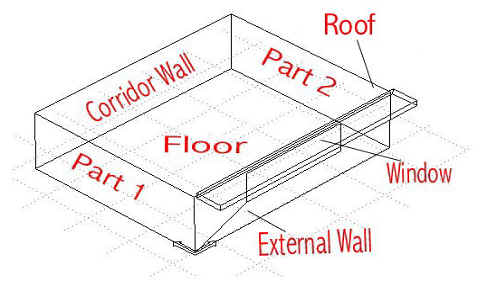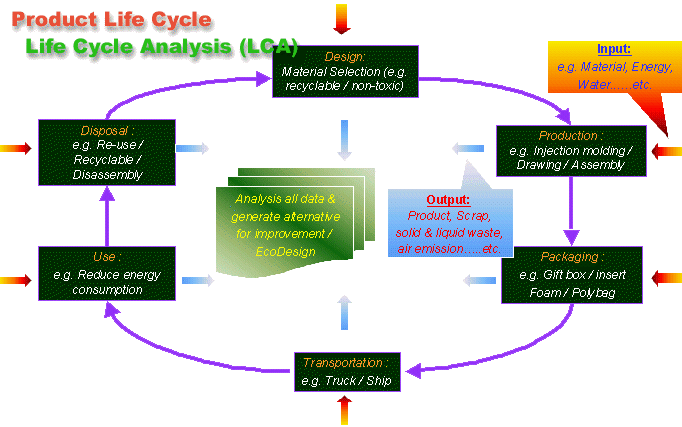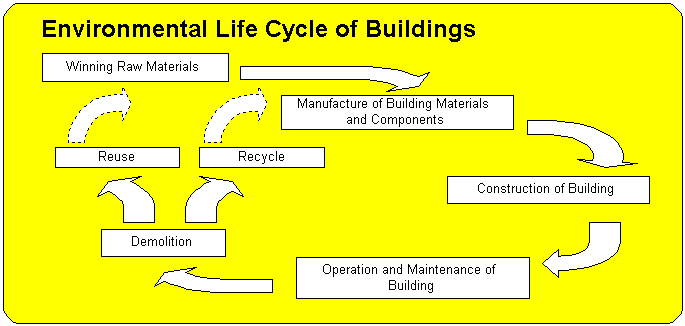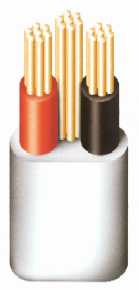The
total manufactured mass of construction material may not necessarily be
equal to the material mass used to construct the room, due to losses
occurring in the manufacturing stage, transportation stage and
construction stage.
Using
the data from the ESP-r model, we were able to obtain the required
construction mass of each building material.
Volume
of each material = Thickness x Surface Area
Mass
of material = Volume x Density
All
calculated material masses are shown in Figure 1
NB/ the materials
of construction are shown as they appear in the ESP-r model for
simplification. Notice that for each room portion, there appears to be
some materials mentioned twice. This is a function of the ESP-r model,
which is required for accuracy, as the material is divided into several
parts due to the position of the nodal points within the software. Both
portions account for the total material usage.
However, as stated previously, the construction mass
for the building incorporated all the losses mentioned previously
(manufacturing, transportation, construction). In order to calculate the
total manufactured mass, we must obtain data of the expected losses during
manufacturing, transportation and construction of each of the materials
within the classroom. This data has been taken from previously published
data.
Calculating the
total manufactured mass of material, incorporating all the expected losses
is an iterative procedure working in reverse order from manufacture. The
transport losses to the construction point should be calculated first,
then the transport losses to the pre-fabrication point (if required)
should be taken into account. As can be seen from Figure 2,
only the window is a pre-fabricated unit, which requires transportation
distances from pre-fab site to construction site. Finally, losses in the
manufacturing phase should be accounted for. What has not been mentioned
is that each construction material has a finite lifespan, which may be
less than the classroom lifespan. If we look at mineral fibre as an
example, the expected lifespan of this material is 30 years. If we carry
out the LCA over a period of 70 years, then this would require at least 2
replacements of this mineral fibre, one after 30 years and another after
60 years. In practice this would be unlikely due to the fact that the
second replacement would probably not occur, since the building will be
decommissioned only 10years after the replacement. If we look at this in
numerical terms:
Building lifespan =
70years
Material lifespan =
30 years
No. of material
loads of mineral fibre = 70/30 = 2.3333
In practice the
effective number of times that a material is replaced in a real building
corresponds to a round number (integer). Therefore, we have assumed that
the no. of material loads will be rounded to the nearest integer, which
gives us the number of replacements over the building lifespan.
Therefore the
number of material loads of mineral fibre required will be (2.3333),
rounded to the nearest integer = 2.
Taking into account all losses and replacements of
construction materials, gives us the total manufactured mass of each
building material as shown in Figure 3.













